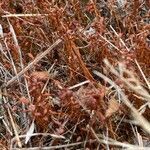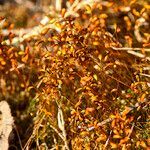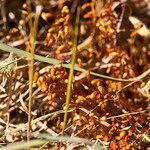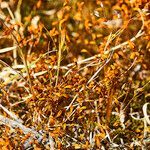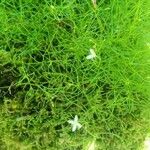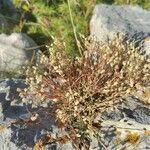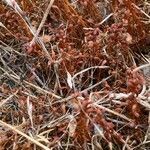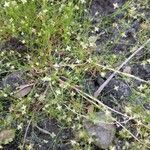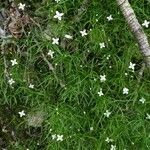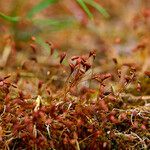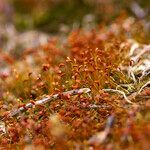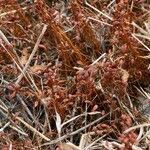Annual. Stems ascending or rarely decumbent, filiform, glabrous or hairy, (1)-2-8-(15) cm tall; axillary fascicles of lvs 0; adventitious roots 0. Rosette lvs short-lived. Cauline lvs linear, hyaline with long cilia at base, very rarely glabrous, aristate at apex, 1-10-(12) × 0.2-0.5 mm; upper lvs becoming subulate. Fls small, 4-(5)-merous, often very numerous. Pedicels with glandular hairs or glabrous, 3-15 mm long. Sepals obtuse or acute, 1-2 × 0.5-1 mm, glabrous or with glandular hairs; hyaline margins often purplish, sometimes green. Petals 0, very rarely minute. Stamens 4-(5). Capsule ovoid, slightly > calyx; styles and valves 4-(5). Seeds brown, triangular-ovoid, papillate, 0.3-0.4 mm long.
Herb, annual, with slender tap root, glabrous or sparsely ciliate and glandular. Stems erect or ascending from a withered rosette, 3–18 cm long. Leaves linear-subulate, aristate, 3–10 mm long, 0.3–0.5 mm wide, ± ciliate toward base. Flowers usually 4-merous, c. 4 mm diam.; pedicels erect, 4–15 mm long, glabrous or glandular-hairy. Calyx glabrous. Sepals ovate, c. 2 mm long, concave and hooded, obtuse, widely spreading in ripe fruit. Petals minute or absent. Stamens 4. Styles 4. Capsule ovoid, equalling or usually exceeding sepals, to 3.5 mm long. Seeds oblique-reniform, 0.2–0.4 mm wide, ± grooved dorsally, brown, tuberculate. See also Green (1994: 94).
Annual herb; glandular-hairy. Stems filiform, ascending to decumbent, much branched. Leaves in a basal rosette withering early; cauline leaves with blade linear, 4-8 mm long, apex aristate, margins ciliate. Flowers: axillary, 4-merous; perianth glandular-hairy, segments ovoid to elliptic, margins hyaline, petals 0. Fruit a capsule, 1.5-2.0 mm long, ± equalling perianth; Aug.-Nov.
